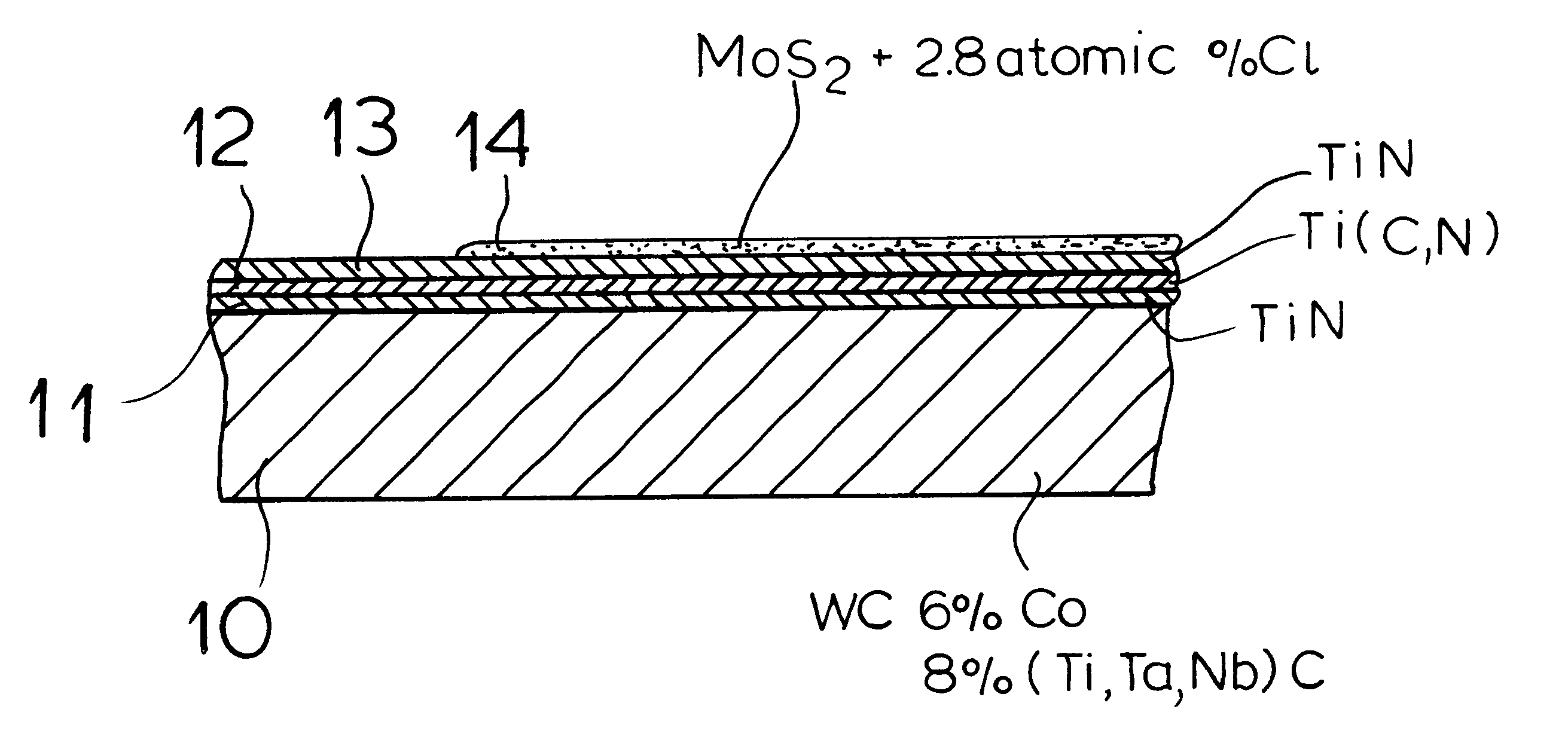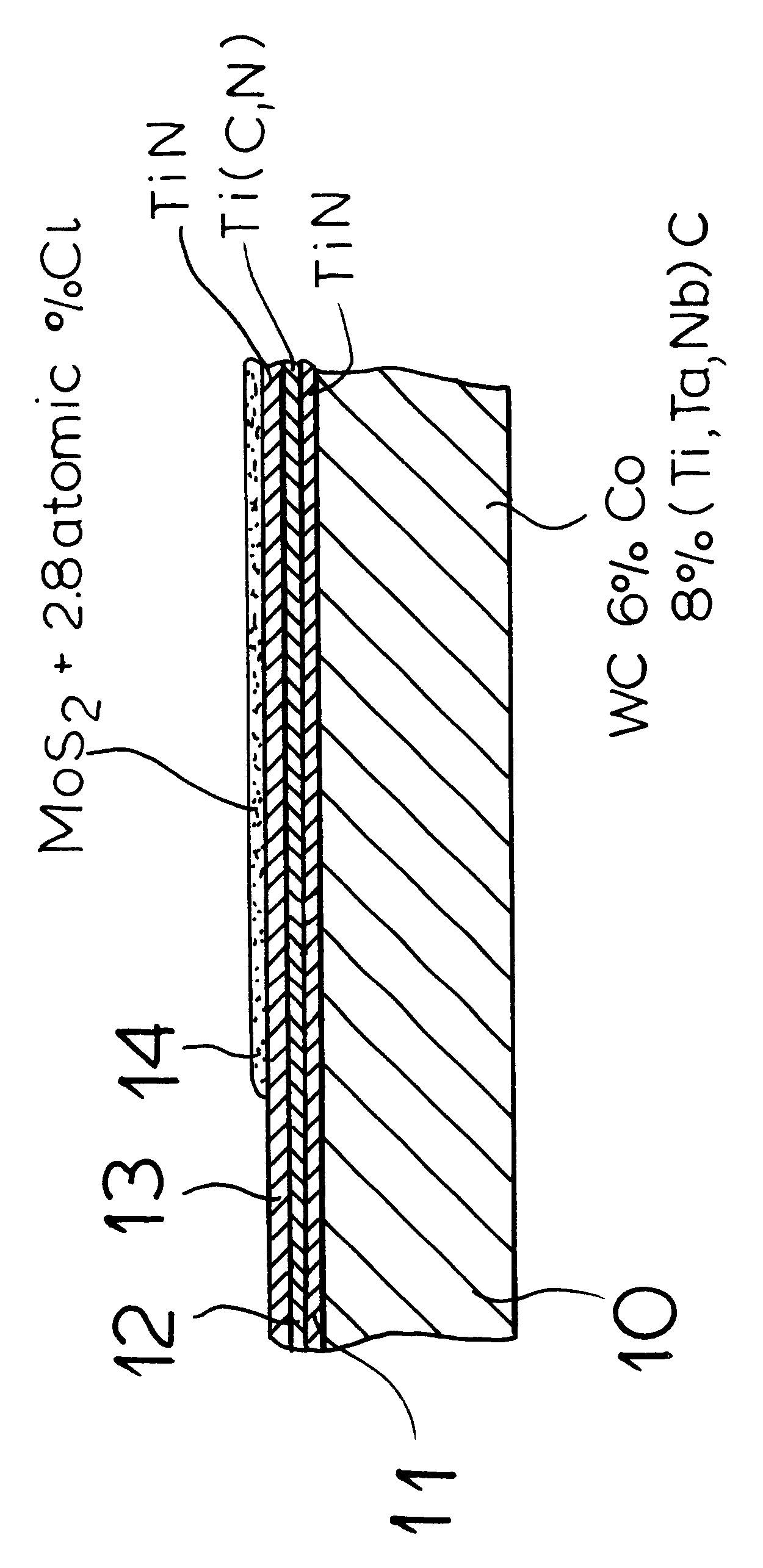Cutting tool and method of making same
a cutting tool and cutting method technology, applied in the field of cutting tools, can solve the problems of high temperature at the tool/workpiece interface, high cost, enhanced wear, etc., and achieve the effects of improving oxidation resistance, improving adhesion, and improving wear resistan
- Summary
- Abstract
- Description
- Claims
- Application Information
AI Technical Summary
Benefits of technology
Problems solved by technology
Method used
Image
Examples
examples
In a series of tests different substrate materials were coated in a heated quartz glass tube. These included uncoated cutting inserts as well as inserts previously coated with titanium nitride / titanium carbonitride / titanium nitride layer sequences as well as thin silicon disks for analytical study. The reactive gas mixture was generated by supplying argon over molybdenum pentachloride in a separate flask and then mixing the product with argon and hydrogen sulfide. The temperature in the quartz gas tube was available between 300.degree. C. and 800.degree. C. The pressure could be controlled between 0.1 and 50 kPa. For control of the flow rate, a flow meter was used. Respective atomic compositions of the produced single or outer layer was determined by wavelength dispersive X-ray spectroscopy. By X-ray diffraction studies of the deposited layers, the proportions in the solid phases of silicon Mo.sub.2 S.sub.3 were determined. Especially high proportions (greater than 70 volume %) of h...
PUM
| Property | Measurement | Unit |
|---|---|---|
| Percent by atom | aaaaa | aaaaa |
| Percent by atom | aaaaa | aaaaa |
| Percent by volume | aaaaa | aaaaa |
Abstract
Description
Claims
Application Information
 Login to View More
Login to View More - R&D
- Intellectual Property
- Life Sciences
- Materials
- Tech Scout
- Unparalleled Data Quality
- Higher Quality Content
- 60% Fewer Hallucinations
Browse by: Latest US Patents, China's latest patents, Technical Efficacy Thesaurus, Application Domain, Technology Topic, Popular Technical Reports.
© 2025 PatSnap. All rights reserved.Legal|Privacy policy|Modern Slavery Act Transparency Statement|Sitemap|About US| Contact US: help@patsnap.com


